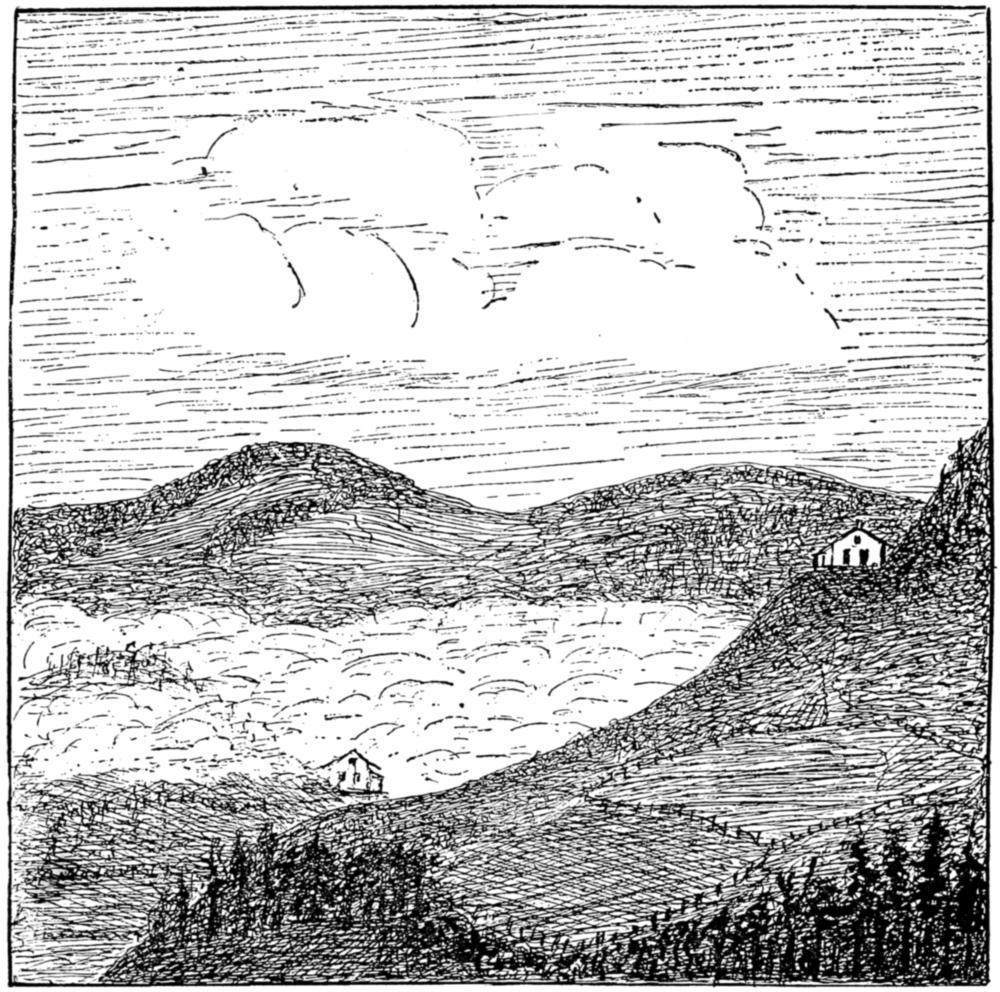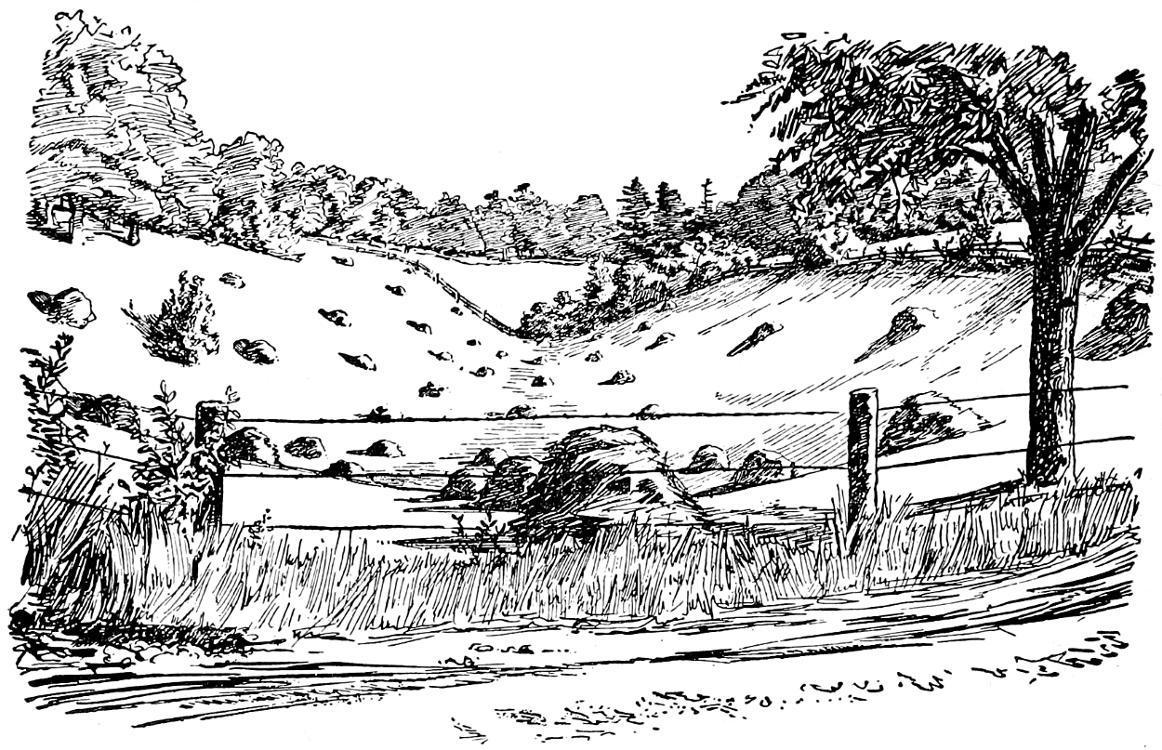Other documents randomly have different content
and such other products as may be marketed infrequently or at leisure. As yet, agricultural methods in America are so new that they have not adjusted themselves to the growing cities, nor have specialized crops found their appropriate localities. Too often are seen truck farms located half a score of miles from the city, and the meat-producing farms within sight of it. As the country becomes older, the varied activities in agriculture will fit themselves into their appropriate localities, as they have already done in many parts of Europe. The dairyman of the Channel islands has long since learned that the piebald cattle of the poulders are not suited to his wants, and the boer of the lowland knows that the meek-eyed, thin-skinned Jersey is not best adapted to his cold, windy country and wet pastures.
Cost of tillage should be considered when valuing land. When produced on friable land, crops may be secured at much less cost than on tenacious clay. On the other hand, while sandy soils are the most easily cultivated, they are ever demanding more plant-food, and hence are not well adapted to grass or general agriculture, as the expense of keeping them productive is usually so great as to preclude profits.
Except in special cases, as in truck farming, it is cheaper to purchase natural plant-food in the soil than artificial fertility. One acre of land may have potential plant-food sufficient under superior tillage for one hundred crops, while another unaided will yield but half as many, and yet the two pieces of land are often priced at the same figure. In other words, land of high productive power is usually cheaper than land of low productive power. A good farm may be cheaper at $50 per acre than a poor one as a gift.
Last, but not least, is the road to the farm. Every free-born American demands a public highway in front of his house; if farms are small there must then be a highway about every mile, or, at most, every two miles. This leads to cutting up the country into enlarged checkerboards, to a multiplication of highways so great that none of them can be kept passably good without overtaxing the land which adjoins them. On account of the contour of the land over which they pass, some roads are extremely difficult and are well described by the man who, when asked how far it was from a certain
farmer to the necessity of a closer relationship between himself and the lawyer,—the family lawyer, if you please, having his confidence to the same extent as that of the family doctor.
Most farmers desire a comfortable and a beautiful home, and it is to aid such that this book is written. Such a farmer would doubtless consult a builder or an architect as to the foundation, walls, plan and materials of the home to be constructed, and he would act wisely; but how many would think so far as to consult a lawyer as to the very foundation upon which his home and his future happy occupancy of it rest: the title to the farm. Too many times he is satisfied with the services of the village solons,—the shoemaker who is a notary public, the justice of the peace, or the pettifogger who daily overrules the supreme court or the court of appeals. Years after he has purchased his farm, he finds, perhaps, that some man has given a deed whose wife has not signed, and upon the death of the woman’s husband our farmer friend is confronted with a law suit; and he finds that this wife, who did not sign the deed, is entitled to dower in his farm, the use of one-third of its value at the time her husband gave the deed, for life. Such cases are frequent, and might easily be prevented by submitting an abstract of the title to a lawyer at a cost of $5 or less. The flaw in the title may be a mortgage or judgment, or a failure of all the heirs of a deceased person, somewhere along the chain of title, to join in the deed; all of which might be overlooked by the ordinary business man, and yet be readily detected by a lawyer.
Some day the farmer may be annoyed by the encroachment of a neighbor upon his farm, and, when in the midst of a litigation, find that the description of his farm is so defective that there is no relief. I have in my possession a deed of a valuable farm containing this description: “Beginning on the —— road at the south end of a pile of four-foot wood; running thence westwardly to a black cherry tree, thence northerly to a stake, thence easterly to a pine stump in the center of the road, and thence southerly to the place of beginning, containing 100 acres, more or less.” For fifty years this description has been copied, a score of times, by the various justices of the peace and notaries public of the neighboring hamlet, but fortunately, however, it has never devolved upon the owners to establish the boundaries of that farm. The first lawyer who got hold of this
Most of the litigation so much feared by the farmer is due to the farmer himself and his neglect to seek an ounce of preventive. It is true that there are rascally lawyers; so, too, there are dishonest men in every trade, occupation or profession, but they are generally easily located.
If this chapter shall lead the farmer to feel that his business is farming, that “a jack-at-all-trades is master of none,” and that the law, justly interpreted and enforced by those who know it thoroughly and well, is to be the foundation of his success, the guarantee of his home through life, and the channel of its proper disposal after death, then it has not been written in vain. Remember that the province of the true lawyer is to keep his client out of trouble, rather than to get him out of trouble. An honest lawyer, of whom, thank Heaven, there are very many, notwithstanding the popular prejudice of those who have suffered from litigation, will always try to steer you clear of litigation and loss.
In conclusion, then, always consult a lawyer in matters affecting your farm or property. The average fees of a lifetime will not exceed fifty dollars, and oftentimes valuable advice will be given free. Select one in whom you have confidence, and stick to him. Become his friend, and let the relation be one of mutual confidence. Do not neglect to ask him a question because you fear he will think you dumb; he probably knows less about farming than you do about law. He will need your advice and influence in minor matters as much as you need his. Call on him when you are in town, and he will be glad to see you. Very often he will answer your question gratis. When he charges you what may seem a large fee, remember that you are paying for skilled labor, and that you are entitled to expend as much for the possible welfare and happiness of your family as you expend upon the choice stock in your stables. Farmers, more than any other class of men, perhaps, are prone to neglect legal matters, or place them in incompetent hands.

In a little pocket about twenty feet deep, formed by hills, with a road embankment at its mouth, fruits failed, although they flourished on the adjoining land, where there was good air drainage (Fig. 6). If fruits do not thrive on these undrained areas, the natural conclusion is that the children will not. It is found that the upper stories of city buildings are healthier than the lower ones, and that the ground floor is the most unhealthy of all. This is the only objection to a one-story house. On the level prairies little opportunity is offered for locating
Fig. 5. A house in the bottom of the valley and one on the mountain side.
the house above the level of the surrounding country Fortunately, many of the prairies are undulating, and furnish most beautiful locations for country homes. Much may be done, even in the level country, to overcome the disadvantages of the site by placing the cellar of the house only two or three feet in the ground and grading up to within a short distance of the top of the wall. A pool or two, or a miniature lake near the barns, and skilful planting of trees will lend a diversity and charm well worth the attention and time given to them.

A pool may be made by scooping a place in hard earth or by damming a stream (Fig. 7). If no water is allowed to flow over the dam and it is raised some two feet above the overflows, it will serve every purpose as well as an expensive grout or stone structure. It will be noticed in the picture that provision has been made by digging shallow ditches on the right and left for carrying off the surplus water when the miniature lake is full. In constructing the dam, a trench two feet wide, at right angles to the stream, should be dug to the depth of
Fig. 6. A frosty pocket.
But beauty loses much of its charm where healthy vigor gives not the power to appreciate and enjoy it. So the house should be located on a healthy eminence. But it is not easy to find a location which shall combine convenience, beauty, air and water drainage, and healthfulness all in the highest degree. In the case of the farmer, convenience as to carrying on the various operations of the farm and healthfulness are paramount. Drainage may be artificially improved, vistas opened, miniature lakes constructed, and surroundings made more beautiful. The farm and its equipment is the workshop, and must be convenient in all its appointments, or much energy is spent for naught; health must be maintained at the highest, or work may become but toil and drudgery.
In locating a house, its relation to the size of the farm, its productiveness and agricultural capabilities should be considered. In locating the site, two places should be carefully avoided: First, at the end of a long lane in the middle of the farm. It may be said that the buildings form the natural nucleus in and around which the work centers, and therefore they should be placed near the middle of the estate. But the work carried on in the fields forms but a small part of the farmer’s activities. He must ever, in these modern times, be in touch with the school, the church, the post office, the railway, the market, and his neighbors. When an infrequent call is made at the end of this long lane, the children appear like frightened deer as they seek shelter in the shrubbery or behind the corner of a building, and the more the inherited timidity and reserve, the wilder they appear.
The other location to be avoided is within a few feet of the highway. Such locations are only admissible in the city, where land sells by the square foot. What fortunes are sometimes spent in the city to secure some amplitude of space between the dusty, noisy street and the residence! What dignity and repose an ample, well kept house-yard gives to even a plain, modest house! The effect of the mistake of locating the house too close to the highway is often accentuated by locating the barns on the other side and immediately upon the highway, and in front of the house. The location of the house, as to the highway, should be governed, in part, by the size and productive power of the farm. If ample acres and means are







